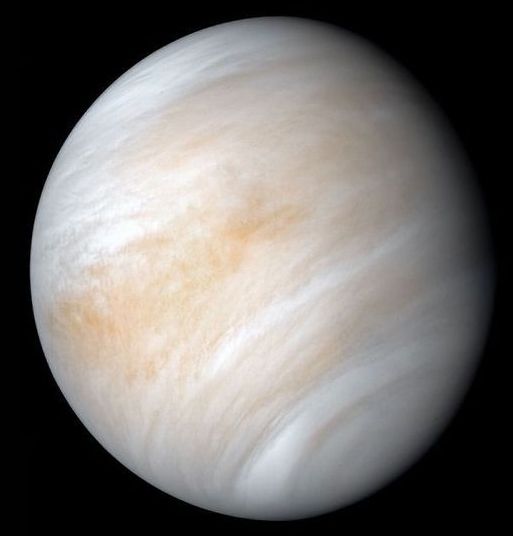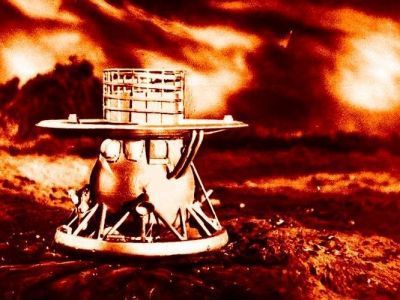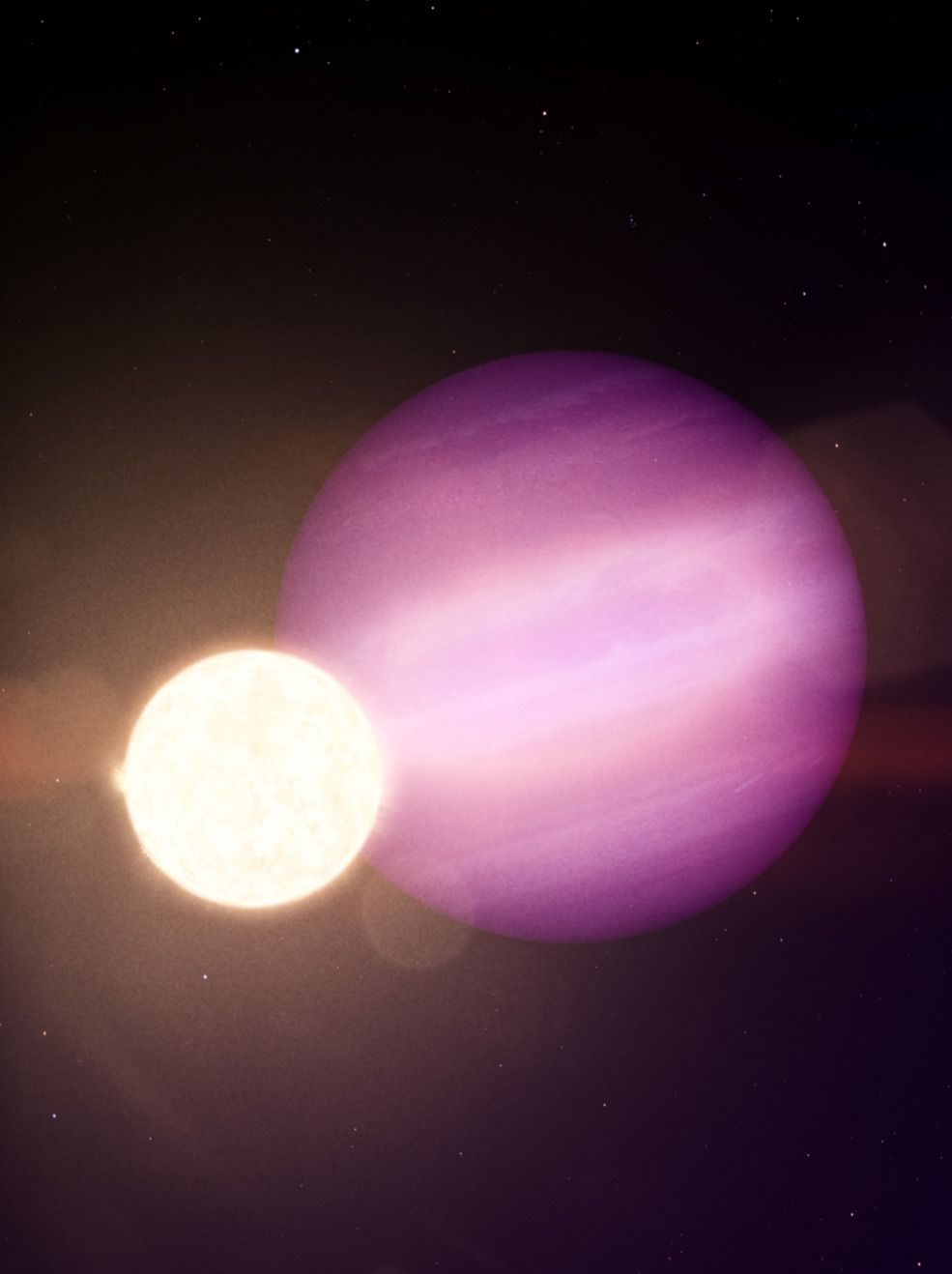What’s it like to live in space? To get some insight on playing an astronaut going to Mars, Hilary Swank visited NASA’s Johnson Space Center, and spoke with astronaut Jessica Meir, who lived aboard the International Space Station for over 200 days. Bonus: Mission Control cartwheel.
Get the latest international news and world events from around the world.

A pandemic is no time to cut the European Research Council’s funding
About 25% of all patents filed by projects supported by Horizon 2020 have come from ERC projects, even though commercialization of research is not the agency’s main aim. Bourguignon and his colleagues rightly argue that many advances in fundamental research ultimately contribute to innovation and benefit society. But that is a hard message to get across at a time of constrained funding and competing priorities.
Europe’s flagship science agency will be crucial to a post-coronavirus world. Slashing its budget will be a senseless act.
Moving Galaxies — How The Universe Works
13.8000000000 years ago, a speck of energy burst into life. We call it the big bang space and time pushed out in all directions ever since our universe has expanded. But the way it’s expanding makes finding an edge a major challenge. Universe is expanding and expands, according to a very simple law that the farther way the galaxy is from us. the faster it appears to be receding away from us. The furthest galaxies are moving at very high speeds. the most distant galaxy we’ve ever spotted. GNC Eleven seems to have moved 32000000000 light years away from us in just 13.4000000000 years that’s faster than the speed of light. We can measure the speed with which galaxies are moving away from us and many galaxies are moving away from us at speeds faster than the speed of light. This sounds like it’s breaking the law right. There’s this idea that you’ve all been told that Relativity says nothing goes faster than the speed of light. Okay you’ve been lied to. Space itself can do it once it makes the rules it can break the rules that rule applies to matter not the space itself. space can expand at whatever it wants simple way to think of this expansion law is imagine standing on an infinite rubber sheet that stretches all the way out into the distance and you’re standing on the same place. you can mark it with a little X now all the sheet expands in every direction so it expands. Two another galaxy that will say one foot away from you is now two feet away from you as we stretch the sheet, but another galaxy was ten feet away from you expand that by a factor of two and now it’s twenty feet away from you. So in the same amount of time, one galaxy move one foot where another galaxy moved ten feet. so the more stuff there is the more elastic between you and another galaxy the more it seems to expand away from you. Expansion means our observable universe stretches for a colossal 46000000000 light years in all directions 92000000000 light years across. Getting bigger by the second. This number is so incomprehensible large that it’s difficult to wrap your brain around. there are trillions of galaxies within this volume. It’s staggering. It’s so much larger than anything we’re familiar with.
This artificial spiderweb mimics the elasticity
This artificial spiderweb mimics the elasticity, adhesion, and tensile strength of spiderweb silk and, with the capacity to self-clean and sense objects, can even replicate some spiderweb features that rely on the behavior of spiders themselves.
Read more about the research Science Robotics:
🕸https://fcld.ly/wsnulle
🕸https://fcld.ly/rvgs2ub
The brain-computer interface is coming, and we are so not ready for it
Are you ready?
“if you were the type of geek, growing up, who enjoyed taking apart mechanical things and putting them back together again, who had your own corner of the garage or the basement filled with electronics and parts of electronics that you endlessly reconfigured, who learned to solder before you could ride a bike, your dream job would be at the Intelligent Systems Center of the Applied Physics Laboratory at Johns Hopkins University. Housed in an indistinct, cream-colored building in a part of Maryland where you can still keep a horse in your back yard, the ISC so elevates geekdom that the first thing you see past the receptionist’s desk is a paradise for the kind of person who isn’t just thrilled by gadgets, but who is compelled to understand how they work.”
Then there are the legal questions: Can the cops make you wear one? What if they have a warrant to connect your brain to a computer? How about a judge? Your commanding officer? How do you keep your Google Nest from sending light bulb ads to your brain every time you think the room is too dark?
A wearable device that can decode the voice in your head is a way’s off yet, said Jack Gallant, professor of psychology at University of California, Berkeley and a leading expert in cognitive neuroscience. But he also said, “Science marches on. There’s no fundamental physics reason that someday we’re not going to have a non-invasive brain-machine interface. It’s just a matter of time.
”And we have to manage that eventuality.”
Guy Designs Off-Road Wheelchair For His Wife So She Can Go On Adventures
A YouTube engineer invented an off-road ‘Not-A-Wheelchair’ for his wife to give her more freedom than ever before.
Zack Nelson, better known as JerryRigEverything, is known for testing out the durability of smartphones, looking at drones and conjuring other cool, wacky stuff.
His partner, Cambry Kaylor, is a regular contributor on the channel. In 2005, she had an equestrian accident which led to her being paralysed from the waist down. With Zack’s help, her injury doesn’t hold her back whatsoever.

Rocket Lab’s plan to search for life on Venus in 2023 just got more exciting
The California-based company aims to launch a private Venus mission in 2023 to hunt for signs of life in the clouds where scientists just spotted the possible biosignature gas phosphine. But that landmark effort will be just the beginning, if all goes according to plan.
Rocket Lab’s life-hunting Venus mission in 2023 will be just the beginning, if all goes according to the company’s plan.

Proofs of life on Venus can be obtained only through contact explorations
Discovering chemical substances as possible chemical markers of life existence in Venus’s atmosphere via remote astronomical observations cannot be considered objective evidence of life existence on the planet, says Roscosmos Executive Director for Science and Advanced Programs Alexander Bloshenko. ‘Credible scientific data on that matter can be obtained only via contact explorations of the planet’s surface and atmosphere,’ he added.
Notably, the USSR was the only country to conduct regular explorations of Venus using on-planet stations. The first ever soft landing on another planet’s surface in the Solar system was performed in 1970 by the Venera-7 descent module. Several orbital missions and landings provided detailed data on the Venerian climate, soil and atmosphere composition. The Soviet Venera-13 spacecraft still holds the record as the longest active spacecraft on Venus remaining operational for 127 minutes.
A huge breakaway of the Soviet Union from its competitors in exploration of Venus contributed to the fact that USA called Venus a ‘Soviet planet’. Having recently analyzed the pictures of Venus captured by Soviet missions, scientists of the Russian Academy of Sciences claimed they discovered moving objects and even might be living. And it remains to be seen, whether these guesses are true.
Today, a program of complex exploration of Venus has been developed by Roscosmos in cooperation with the Russian Academy of Sciences. The program consists of several missions. Moreover, a decision was taken to implement the previously planned Venera-D mission including orbital and landing modules, as a national project without involving wide international cooperation. The complex explorations will also include soil and atmosphere samples, as well as exploring evolution processes on Venus that has purportedly suffered a climatic disaster connected with greenhouse effect that is much discussed on Earth today.

The ISS Is About to Get Its First Commercial Airlock
A SpaceX Falcon 9 rocket is about to carry what will soon become the International Space Station’s first privately-built airlock.
The company has previously built standardized boxes for space-based experiments and tiny satellite deployers, The Verge reports.
The Bishop is shaped like a bell jar and attaches itself to the outside of the space station using a number of clamps and latches.
“Once it’s there, it’s just extra real estate until we want to use it,” Mike Lewis, Nanoracks’ chief innovation officer, told The Verge. “We can use it in a number of ways, the first of which is to bring things outside.”

Can Life Outlive Its Host Star? NASA’s Webb Telescope Will Find Out
With today’s news of the first-ever detection of an intact planet closely orbiting a stellar white dwarf, a team led by two Cornell University astronomers has also shown that NASA’s forthcoming James Webb Space Telescope (JWST) would be capable of detecting biosignatures from earth-sized planets orbiting such dying stars.
As reported in the journal Nature, the white dwarf in question —- WD 1856+534 —- is now thought to harbor a Jupiter-size object orbiting this dying stellar core on an insanely short orbit of only 34 hours. But even before today’s announcement, Cornell astronomers were testing their idea that the Webb telescope might also be able to detect earth-sized objects within the same system.
In separate research submitted to The Astrophysical Journal Letters, Cornell University astronomers Lisa Kaltenegger and Ryan MacDonald and the paper’s 1st co-authors, lay out their case for using the Webb telescope to look for very short transits of such rocky worlds as they pass in front of the these white dwarfs. They used WD 1856+534, which is only 40 percent larger than Earth and lies only 80 lights years away in the constellation of Draco, as their test case.